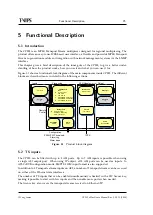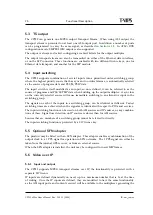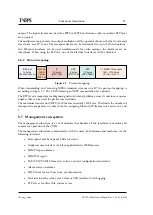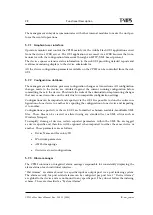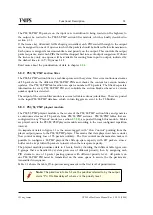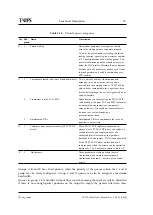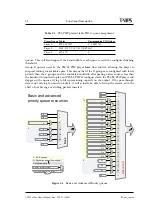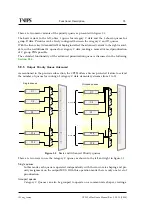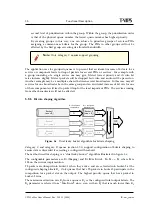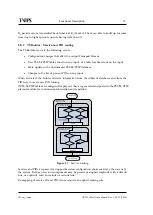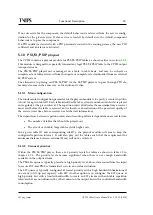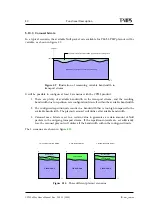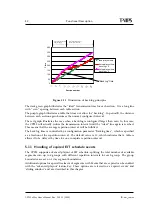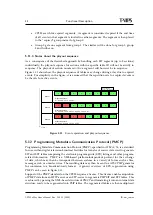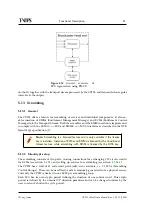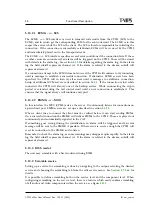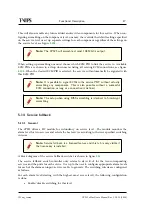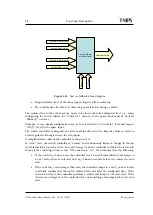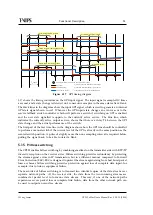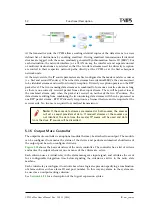
Functional Description
39
ID: um_tsmux
CP525 cMux User’s Manual Rev. 5.20.12 (3944)
If no rule exists for the component, the default behaviour is retrieved from the service config-
uration for the given service. If this service is routed by default rule, the default component
behaviour is to pass the component.
If a PID conflict is detected with a PID previously routed in the routing process, the new PID
is filtered and an alarm is activated.
5.10 PSI/SI/PSIP playout
The CP525 contains a playout module for PSI/SI/PSIP tables as shown earlier in section
.
This module is designed to repeatedly transmit any legal PSI/SI/PSIP table to the CP525 output
transport stream.
The PSI/SI/PSIP played out is managed on a table to table basis, and may be sub-sets or
complete sets of tables retrieved from the inputs, or complete sets downloaded from an external
SI/PSIP system.
The alternative to playing out PSI/SI/PSIP via the SI/PSIP player is to pass through PID ele-
mentary streams in the same way as for audio and video.
5.10.1 Main configuration
The fundamental configuration parameter for the playout module is to specify a wanted
repetition
interval
for a given table ID. Each table (identified by table_id and a number of sub-id’s) is played
out regularly at the given interval. The repetition interval indicates the maximum time a receiver
must wait before the table is received and is therefore an indication of the perceived quality of
the service (wait time before receiver has fetched all information).
The dependency between repetition interval and resulting bitrate is dependent on several factors:
•
The number of tables that should be played out
•
The size of each table; larger tables yields higher rate
For a given table ID and corresponding sub-ID’s, the playout module will aim to keep the
configured repetition interval. It will also play out the tables such that the requirement for
minimum distance between sections (25ms) will not be violated.
5.10.2 Carousel priorities
Within the PSI/SI/PSIP player, there are 3 priority levels for tables as shown in table
in
chapter
. The priority levels become significant when there is not enough bandwidth
available in the output stream.
The PSI table queue is typically placed at a high priority level, above data routed from the input
to assure PAT and PMT is transmitted even in an overload situation.
The EIT queue is typically configured at lowest priority with a high bandwidth limitations if
one want to fill up rest capacity with EIT. Another option is to configure the EIT queue at
high priority but with a limited bandwidth to create an EIT stream with sub-table repetition
intervals that are not influenced by other content on the output, but with a controlled bandwidth
consumption.
Summary of Contents for CP525 cMux
Page 2: ......
Page 10: ......
Page 12: ...12 CP525 cMux User s Manual Rev 5 20 12 3944 ID um_tsmux ...
Page 18: ...18 CP525 cMux User s Manual Rev 5 20 12 3944 ID um_tsmux ...
Page 24: ...24 CP525 cMux User s Manual Rev 5 20 12 3944 ID um_tsmux ...
Page 66: ...66 CP525 cMux User s Manual Rev 5 20 12 3944 ID um_tsmux ...
Page 238: ...238 CP525 cMux User s Manual Rev 5 20 12 3944 ID um_tsmux ...
Page 248: ...248 CP525 cMux User s Manual Rev 5 20 12 3944 ID um_tsmux ...
Page 276: ...276 CP525 cMux User s Manual Rev 5 20 12 3944 ID um_tsmux ...

